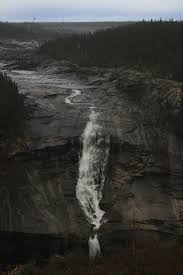Understanding Churchill Falls and Its Impact on Canada’s Energy Landscape

Introduction
Located in the vast wilderness of Labrador, Churchill Falls is one of North America’s largest and most influential hydroelectric power stations. Completed in 1971, this engineering marvel boasts a generating capacity of 5,428 megawatts, significantly contributing to the electricity supply in Newfoundland and Labrador, as well as export markets. The importance of Churchill Falls extends beyond its production of clean, renewable energy; it also plays a vital role in discussions around climate change, energy independence, and economic development in Canada.
The Power of Churchill Falls
Churchill Falls is not only a powerhouse in terms of electricity generation but also in its geographical significance. The facility harnesses the immense flow of the Churchill River, enabling it to produce approximately 36 billion kilowatt-hours of energy annually. The majority of this power is sold to Hydro-Québec through a long-term contract, which has shaped the energy landscape of the region. The negotiations surrounding this contract have often been contentious, reflecting broader concerns over Canadian energy sovereignty and fairness in power distribution.
Environmental Impact and Considerations
While the hydroelectric power generated at Churchill Falls is seen as a green alternative to fossil fuels, it has also raised environmental concerns. The flooding of the surrounding areas to create the reservoir has led to alterations in local ecosystems and has affected Indigenous land use. These challenges prompt ongoing discussions regarding sustainable practices and the need for consultation with Indigenous communities. Balancing energy needs while ensuring ecological and social responsibilities remains a pressing issue.
Future Prospects and Developments
Looking ahead, the relevance of Churchill Falls is expected to grow as Canada intensifies its focus on renewable energy and climate goals. With the push for a transition to greener sources of power, discussions are ongoing about modernizing infrastructure and potential expansions. Plans for interconnections to other regions could usher in a new era of energy sharing across Canada, enhancing collaboration while addressing regional demands.
Conclusion
Churchill Falls stands as a testament to Canada’s commitment to renewable energy and its potential for economic growth. As debates continue about energy distribution, environmental stewardship, and Indigenous rights, the legacy of this hydro power giant will undoubtedly shape discussions moving forward. For Canadians and those interested in energy policy, Churchill Falls underscores the complex interplay between natural resources, technology, and social responsibility, highlighting its continuing significance in our evolving energy landscape.









